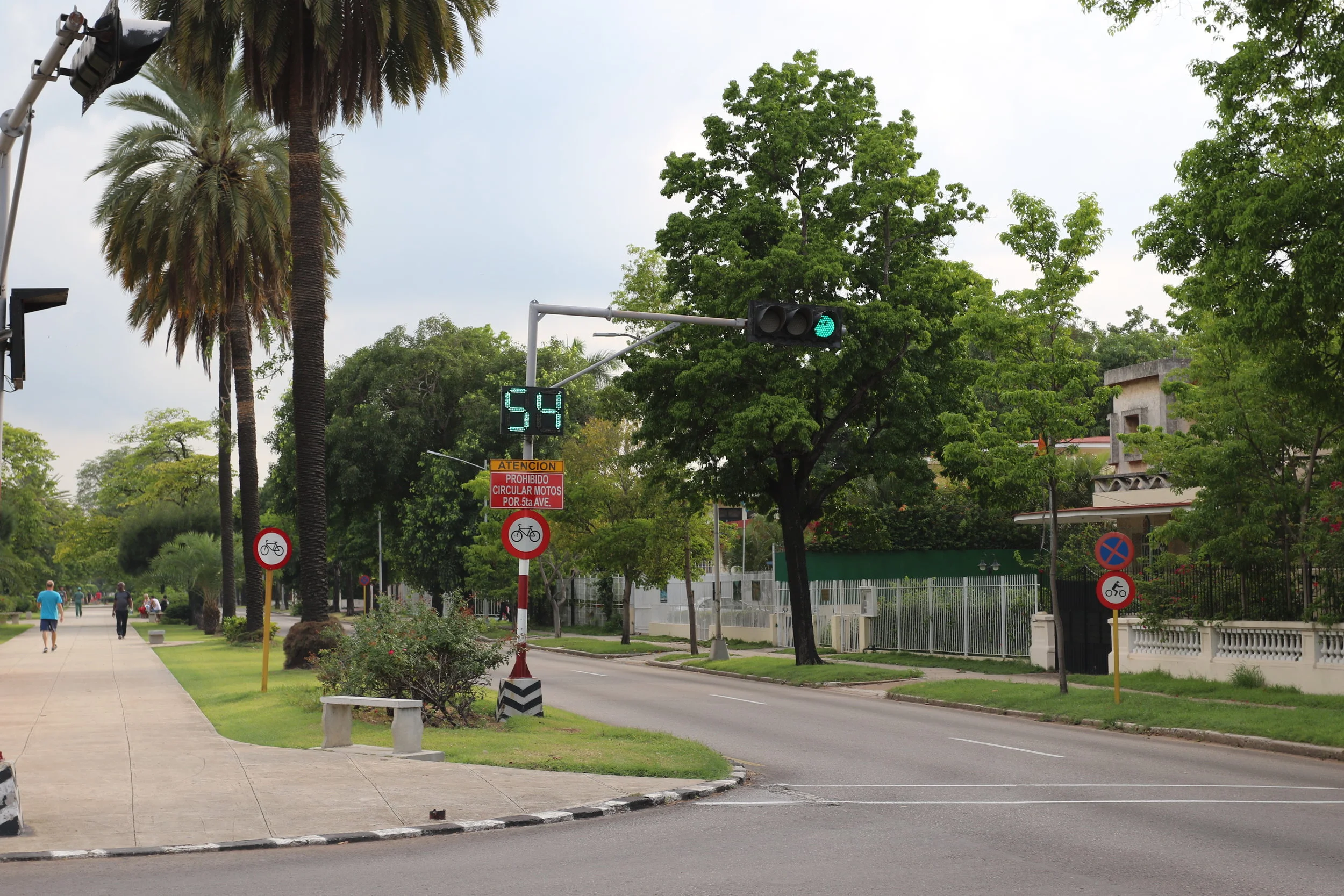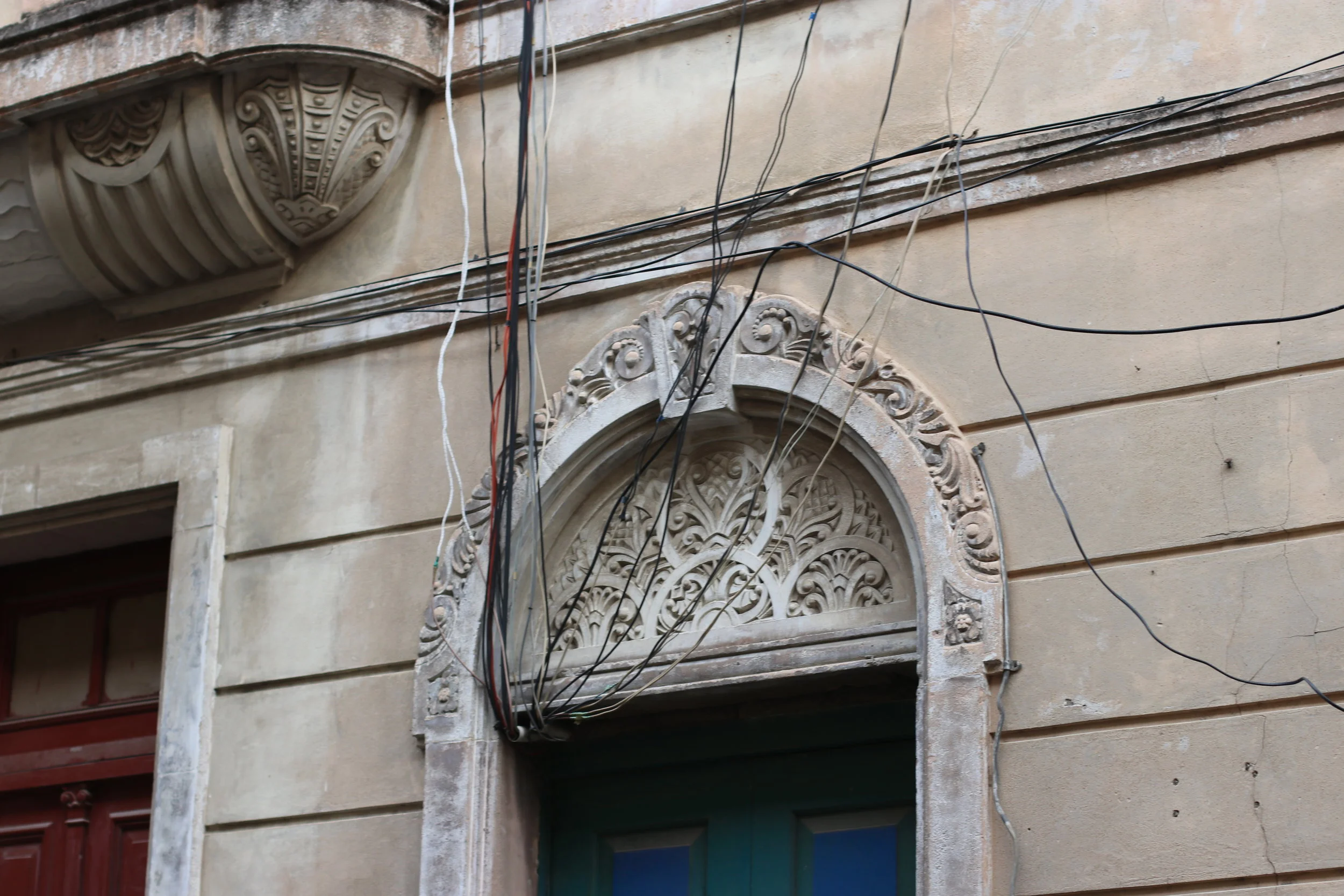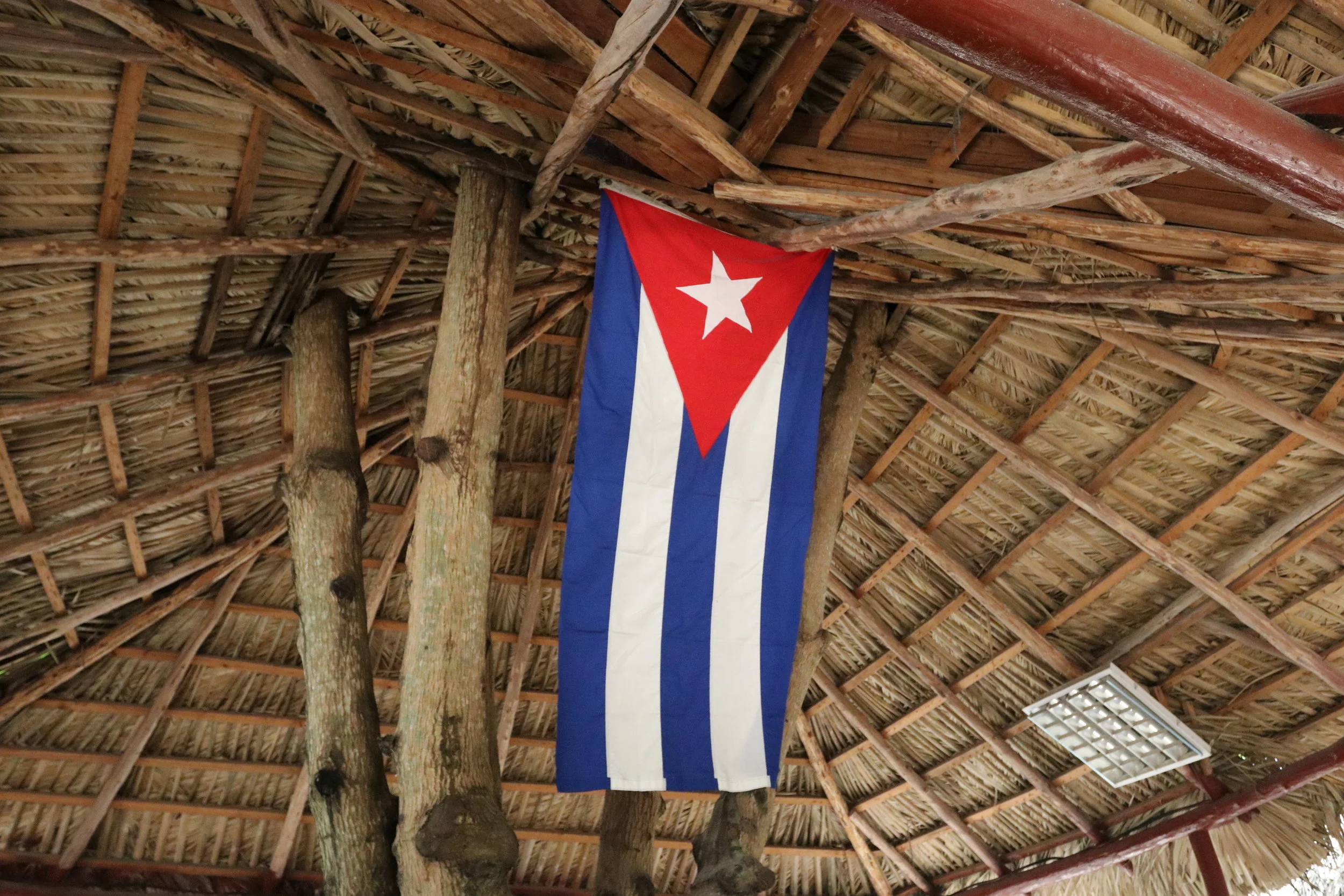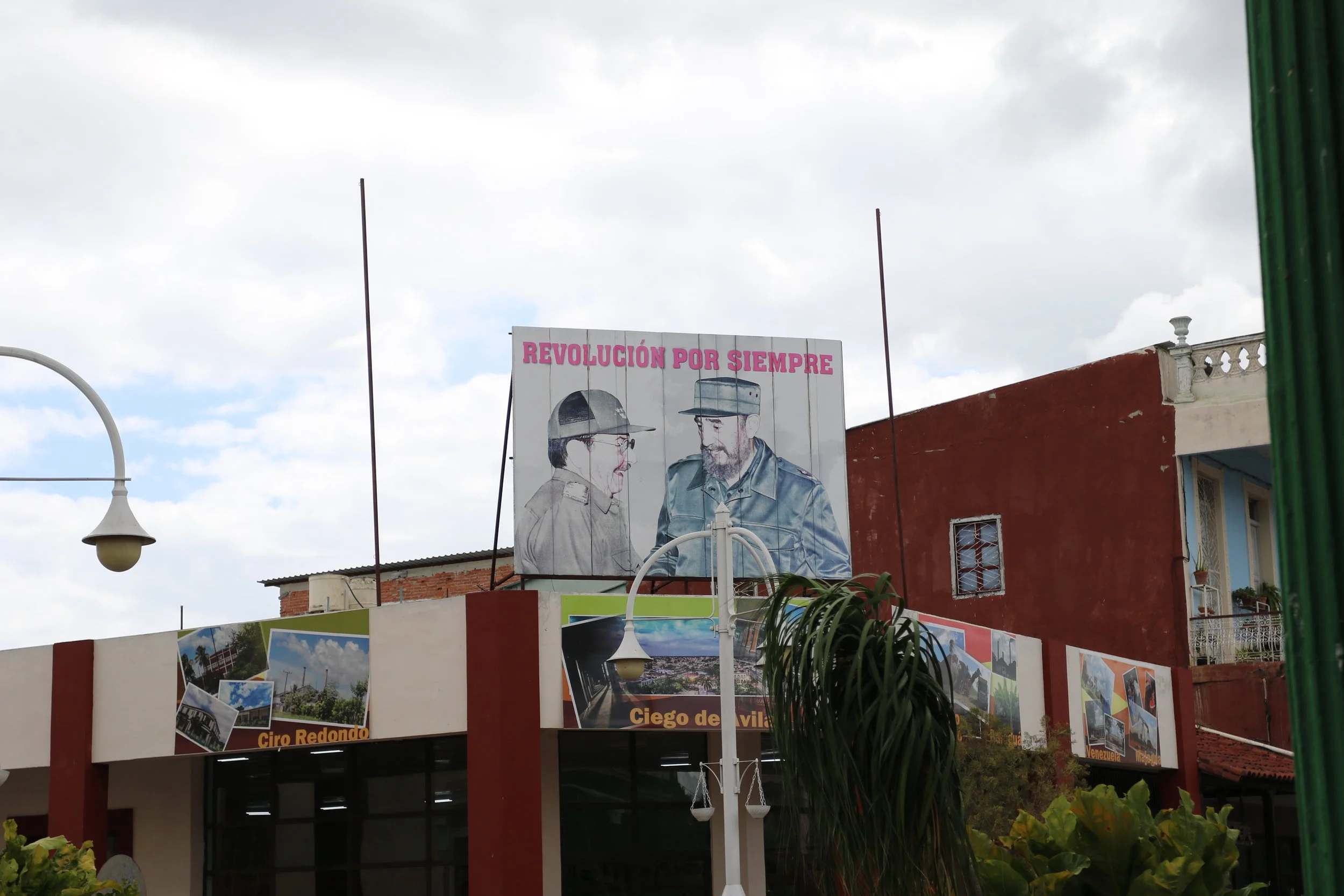
El Paquete Semanal Documentary Film
2018 Scholastic Art & Writing Awards Gold Key and National Silver Medal Winning Documentary
Photo Gallery

This graffiti was found on the side of a small outdoor amphitheatre in Mahatma Gandhi Park in Miramar, Havana. Fidel Castro, Former Prime Minister and President of Cuba, died in November of 2016. While many Cubans did not agree with many of his political decisions, he ruled the country for almost 50 years so he became part of their lives. He is thought highly of by many and some, like the person who created this art, still wish he could live on.

Trinidad is a small tourist town in central Cuba about 10 minutes inland from of the ocean on the South side. Many of the streets are cobblestone and very narrow. This town used to be a trading point for the massive sugar industry in the 19th century.

Very few buildings have been constructed in past decades due to a lack of resources and money. Instead, old buildings are restored to keep them safe and look like they did when they were first built. Most structures like this are built out of cement and brick.

While sitting outside a harbor bar in Old Havana, a local mom and girl walked up to Ms. Youmans, Ms. Flinsch, and me and asked if one of us were a professional photographer. Ms. Flinsch pointed at me and said "he is." Thalia, the girl, would be turning 15 in a few months which is a big celebration in Spanish speaking countries. They wanted to schedule a shoot later, but I told them we would be leaving Havana the next day. We took a few portraits anyways. She did not speak any English which was a great opportunity to practice my Spanish, instructing her what to do.

Because of the US embargo starting in the early 1960s, the import of new cars halted. This also meant finding spare parts for these cars was very difficult. As a result, Cubans repaired their cars with whatever they could find: Russian parts, homemade parts, and other unorthodox techniques. Today, there are still few cars for sale. Most are passed down through generations. Those who have the privilege to own a car take great pride and treat them with respect as, for many, it will be the only one they will own.

In Havana, cars, both old and new, roam the streets in vast quantities. In the other two cities we visited, Trinidad and Ciego de Ávila, there is much less traffic overall and the most common form of transportation is the horse drawn carriage. The stoplight pictured above is on Calle 20 and 5ta Avenida. Almost every stoplight has a "shot clock" where it counts down the amount of time left before the light will change.

While staying in La Iglesia Bautista Enmanuel in Ciego de Ávila, Cuba, I noticed how many exposed electrical wires were present. Most of the buildings were built before electricity was domestically available. I found it fascinating how the Cubans incorporated this in their homes and how many exposed wires were present in every corner.

The Cuban people are proud to be Cuban. All take pride in their country, even if they wish they had more communication and goods with the world. They have community and the ability to talk, face to face, with their friends, classmates, coworkers, and extended family. Because phone service is so limited, there are few distractions so people are more attentive and talk with the people around them.

At 10:30pm on a Friday night, this wifi park in Havana is full of people on their phones. I would have thought only younger, more tech-savvy Cubans would inhabit these parks, but I was wrong. There are young kids running around as they wait for their parents and even grandparents use their precious internet time. Connecting to internet here is much different than the US. You first have to buy a tarjeta which is a wifi card. At the government locations, these cards cost around $1 for 30 minutes. But the hours are limited and the lines are long, so most buy them from the black market where they can cost upwards of $3. Once you get the card, there is a username and password you have to scratch off and enter in the login page pops up - which is rare. If you get connected, the speed is decent for doing most activities like checking Instagram, email, etc. I did notice several items are blocked such as Snapchat, YouTube, and many other websites.

When driving through the countryside, we passed billboards almost every mile. But these billboards were not advertising for any companies: they were advertising for the government. We may call this propaganda, but in their eyes, it is a way of uniting the people and reminding what has happened in the past and what should happen in the future. This small billboard in Ciego depicts Fidel shaking hands with an army general and the text Revolución por Siempre - Revolution Forever.

Instead of water pipes underground, Cubans have water tanks on their roofs and let gravity give them water pressure. When they need to refill the tanks, a water truck comes and pumps water up to the roof. Because the water sits up there for weeks at a time, we were warned not to drink the tap water.

This is the food prep room behind the community center where we had lunch most days and dinner a few times. In this small detached room, the mangos would be skinned, pineapples cut, and yams sliced. I was surprised by the exposed electrical sockets that were everywhere.











